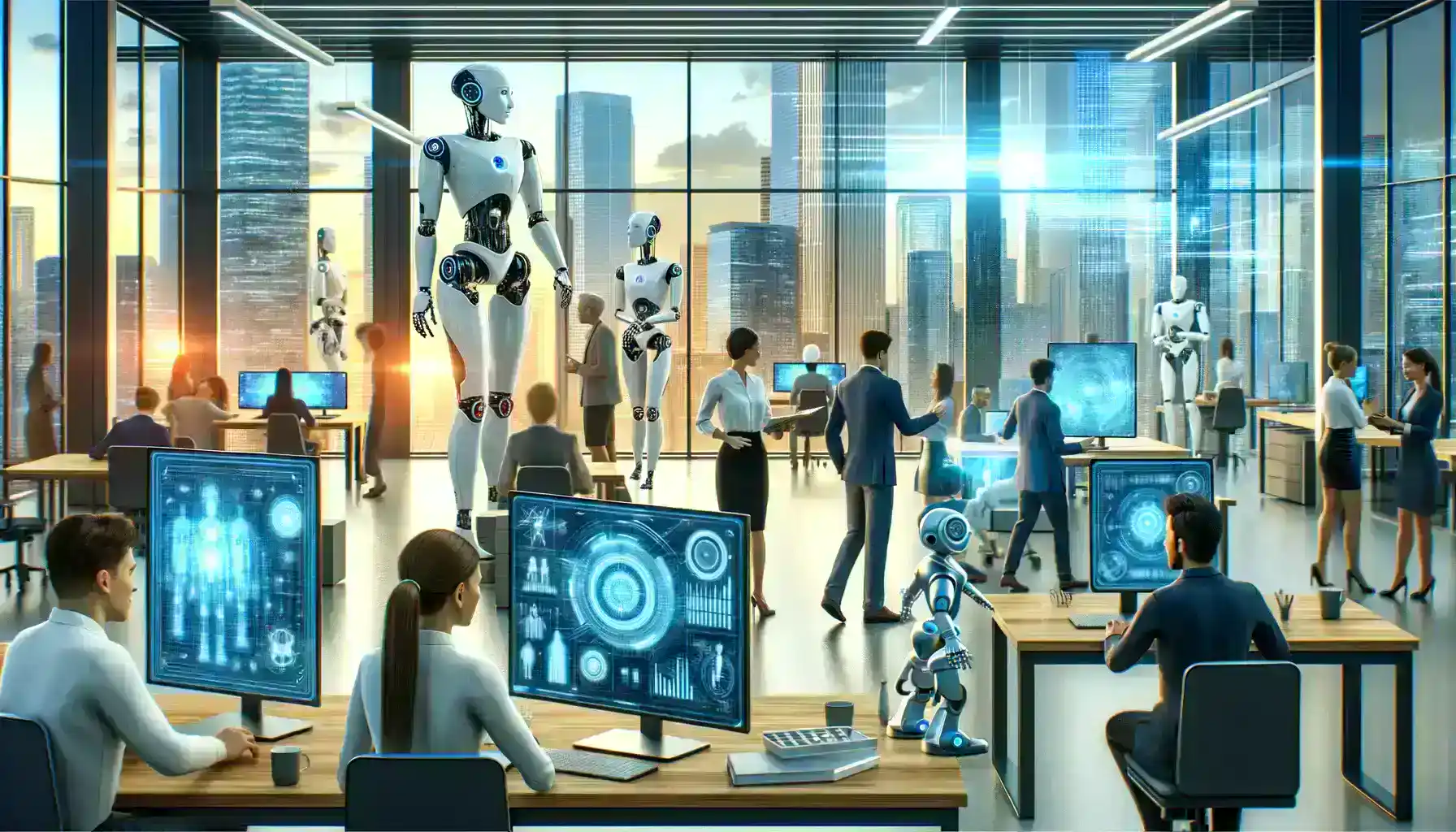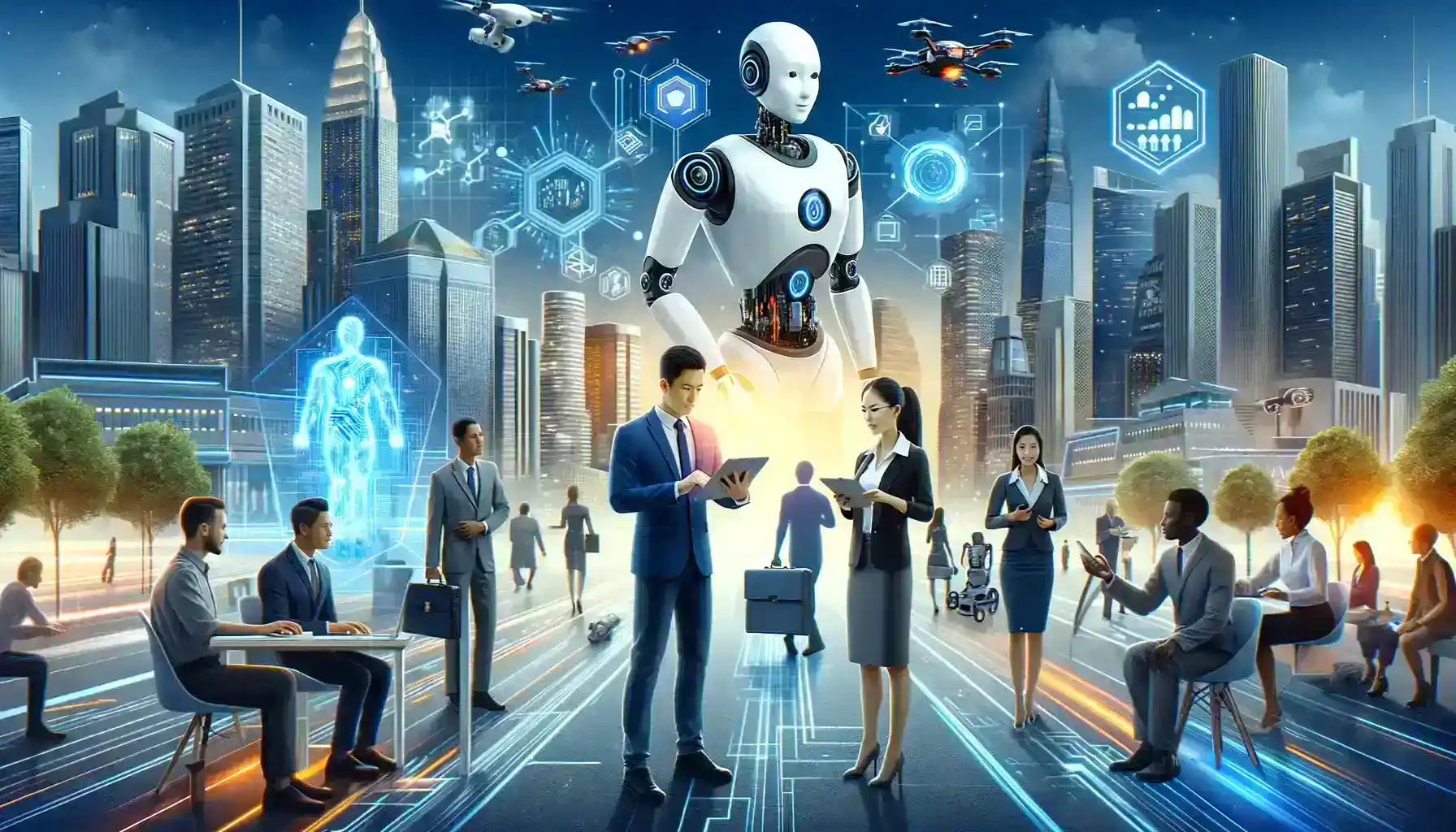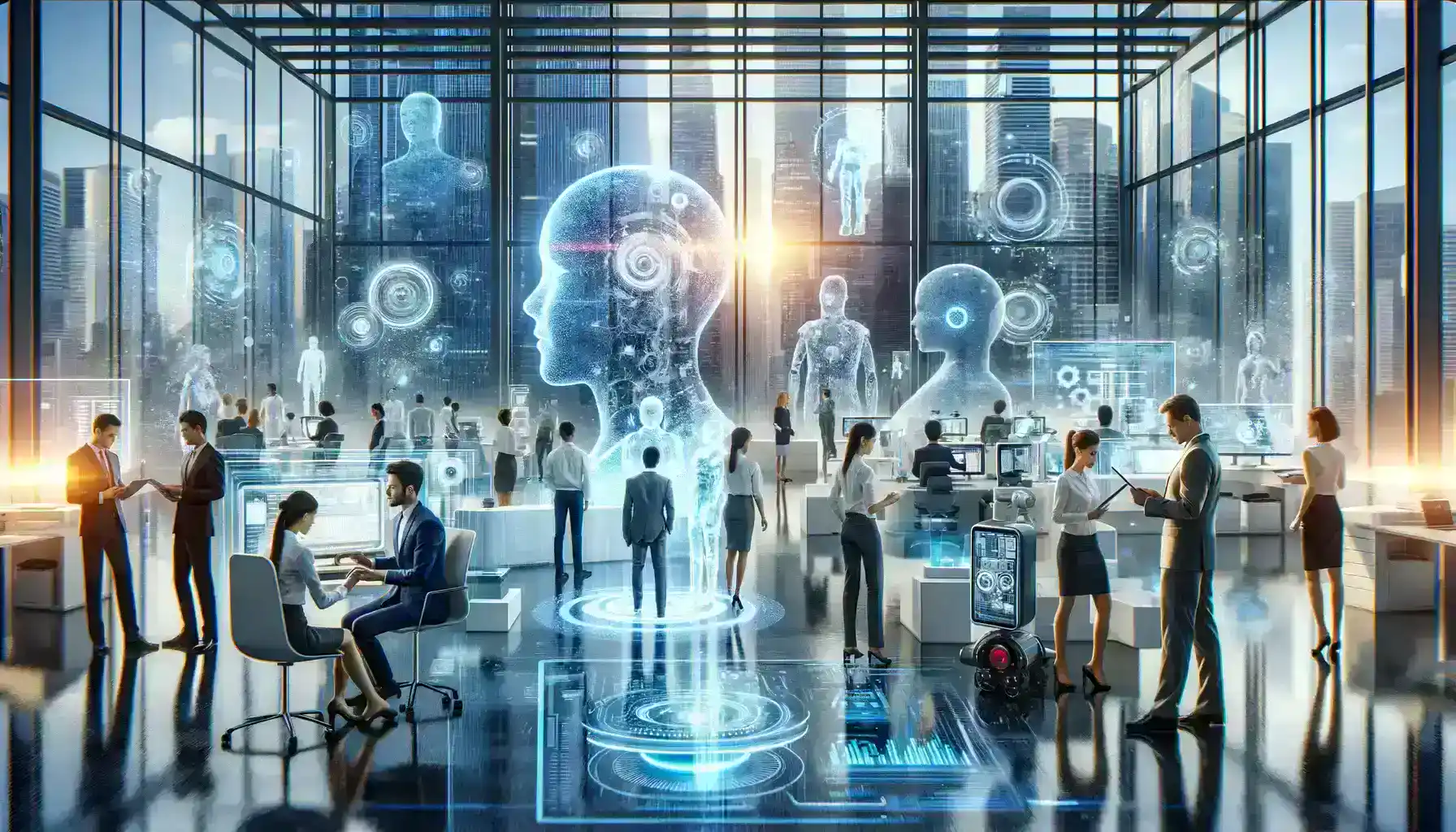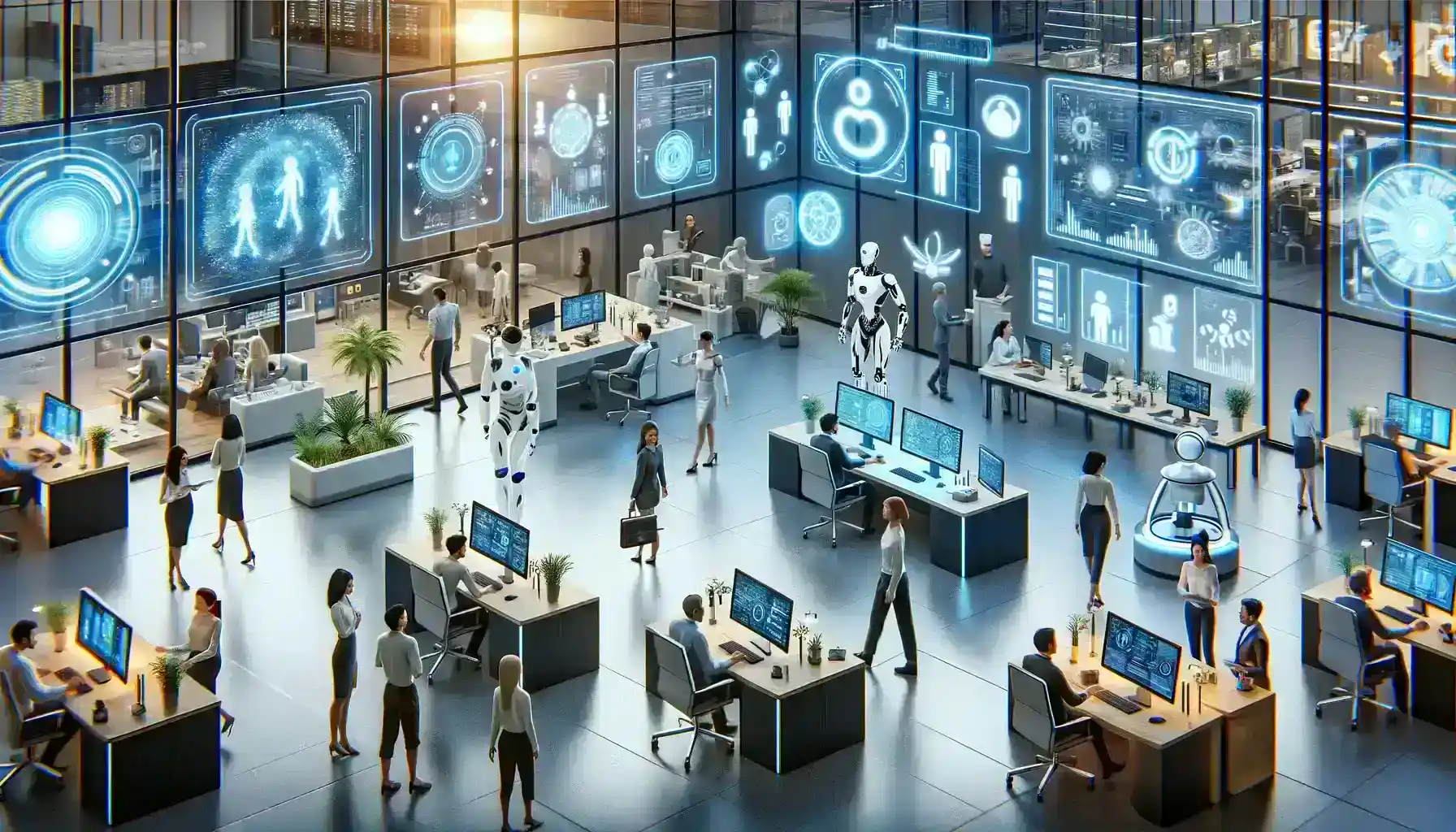Table of Contents
In our current era of swiftly advancing technology, the convergence of AI and employment has emerged as a subject of utmost significance. What was once merely the substance of science fiction has now firmly established its presence in our daily existence, assuming a pivotal role in molding a diverse array of industries.
Artificial Intelligence, often referred to as AI, encompasses a wide range of technologies that simulate human intelligence. These technologies include machine learning, natural language processing, robotics, and more. AI and Employment are no longer confined to research labs; it has permeated industries like healthcare, finance, manufacturing, and even creative fields.
AI and Employment
AI and employment refer to the relationship between artificial intelligence (AI) technologies and their impact on the job market and workforce. It encompasses the various ways in which AI, including machine learning, robotics, natural language processing, and automation, affects employment patterns, job opportunities, and the overall labor market.

The relationship between AI and employment is multifaceted, encompassing both disruption and the creation of job opportunities. While automation may lead to the transformation of certain job roles, AI and employment also have the potential to enhance skills, drive entrepreneurship, and contribute to sustainability efforts, ultimately fostering job growth in various sectors of the economy.
Understanding these dynamics is crucial for individuals, businesses, and policymakers as they navigate the evolving job landscape shaped by AI technologies.
1. Automation and Job Augmentation
- AI-driven automation refers to the use of artificial intelligence and robotics to perform tasks and processes that were previously carried out by humans. While this can increase efficiency and productivity, it can also lead to job displacement in certain industries.
- Job Augmentation and AI Complementing Human Skills important to note that AI doesn’t solely result in job losses. Job augmentation is a concept where AI complements human skills and capabilities, rather than replacing them. Many industries are seeing the integration of AI to enhance the abilities of human workers.
- AI-powered diagnostic tools can assist doctors in making more accurate and timely diagnoses, ultimately improving patient care. This augmentation of skills can lead to better job prospects and opportunities for individuals who embrace AI and employment as a tool to enhance their work.
- High-frequency trading involves the rapid buying and selling of financial instruments, such as stocks, within milliseconds or microseconds. AI-powered algorithms are extensively used in HFT to make split-second trading decisions based on market data and trends.
- AI-driven chatbots are increasingly handling customer inquiries, which can reduce the number of human customer service agents required.

2. AI in Skill Enhancement
- AI is increasingly becoming a vital tool in skill development and training across various industries. One of its key advantages is its ability to provide personalized learning experiences. AI also enhances the efficiency of skill development by offering real-time feedback and adaptive learning pathways.
- AI-driven chatbots and virtual assistants are being used to answer learner queries, provide instant feedback, and offer guidance throughout the learning journey.
- AI can also adapt the difficulty level of content in real-time based on a learner’s progress, ensuring they are appropriately challenged.
- AI’s ability to enhance skills through personalized learning, online courses, and upskilling opportunities not only benefits individuals but also contributes to a more agile and adaptable workforce.
- AI’s role in skill enhancement goes beyond individual development; it also has the potential to bridge skill gaps within industries and create new job prospects. As industries evolve and adopt advanced technologies, the demand for specific skills often outpaces the existing workforce’s capabilities.
3. AI in Healthcare and Telemedicine
- The healthcare industry has witnessed a significant transformation with the integration of artificial intelligence (AI). This shift is not only revolutionizing the way healthcare is delivered but also creating numerous AI and employment opportunities.
- AI is revolutionizing healthcare by enhancing the efficiency and accuracy of various processes. One of its primary contributions is in medical diagnosis. AI-powered algorithms analyze vast datasets, including medical images, patient records, and genetic information, to assist healthcare professionals in diagnosing diseases more accurately and quickly.
- Telemedicine has gained prominence, especially during the COVID-19 pandemic. With AI facilitating remote patient monitoring and virtual consultations, telemedicine professionals, including doctors, nurses, and technicians, are in high demand.

- The integration of AI in healthcare and telemedicine has led to a surge in AI and employment opportunities not only revolutionizing healthcare by improving diagnosis, drug discovery, and patient care but also creating diverse employment opportunities in various sectors of the healthcare and telemedicine industry.
- Artificial Intelligence is not only revolutionizing healthcare by improving diagnosis, drug discovery, and patient care but also creating diverse employment opportunities in various sectors of the healthcare and telemedicine industry.
4. AI in Entrepreneurship and Job Creation
- In recent years, artificial intelligence (AI) has emerged as a driving force behind entrepreneurship and job creation. Startups and businesses across various industries have harnessed the power of AI to not only innovate but also generate AI and employment opportunities.
- AI technology has opened up new possibilities for entrepreneurs. It has lowered the barriers to entry in various markets by providing affordable and accessible tools for automation, data analysis, and decision-making.
- Entrepreneurs are now leveraging AI to identify gaps in the market and create innovative solutions that cater to emerging needs. AI-driven entrepreneurship is shaping the job landscape by creating new business opportunities, enhancing efficiency, and fostering innovation.
- Tesla’s use of AI in its electric vehicles, including self-driving technology, has led to increased demand for engineers, researchers, and technicians specializing in AI and robotics.
5. AI in Sustainability and Green Jobs
- AI and Employment have emerged as a crucial tool in the ongoing efforts to address environmental challenges and promote sustainability. It plays a significant role in various sectors contributing to eco-friendly practices and creating green jobs.
- AI is instrumental in monitoring and managing natural resources and ecosystems. Through advanced sensors, satellite imagery, and data analytics, AI helps track changes in climate, forest cover, and wildlife populations.
- Renewable energy sources, such as wind and solar power, are crucial in reducing carbon emissions. AI plays a pivotal role in optimizing the efficiency of renewable energy systems. AI-driven predictive maintenance helps prevent equipment failures in wind turbines and solar panels, maximizing their lifespan and energy production.
- Startups are increasingly using AI to develop innovative products and services. AI-driven products can range from personalized recommendation systems and virtual assistants to autonomous vehicles and healthcare diagnostics.
- The integration of AI into eco-friendly industries has led to the emergence of “green jobs.” These are employment opportunities that contribute to environmental sustainability.
Case Study
McDonald’s and AI-Driven Kiosks:
- McDonald’s introduced self-service kiosks in many of its restaurants to enhance the ordering process for customers. These kiosks allow customers to browse the menu, customize their orders, and pay electronically, reducing the need for face-to-face interactions with cashiers.
- The introduction of self-service kiosks is a notable example of AI technology being used to automate a portion of the ordering process in the fast-food industry.
Creation of New Positions:
- Contrary to the perception of job loss, the implementation of self-service kiosks at McDonald’s has led to the creation of new positions within the company.
- Customer Service Roles: McDonald’s has introduced customer service staff members who assist customers with kiosk usage, answer questions, and ensure a smooth ordering experience. These employees focus on providing excellent service and addressing customer needs.
- Maintenance Roles: Introducing technology in the form of self-service kiosks requires regular maintenance and troubleshooting. McDonald’s has hired maintenance personnel responsible for the upkeep and repair of kiosks, ensuring they operate efficiently.
- Technology Support Roles: To address technical issues and provide support to both customers and employees, McDonald’s has established technology support positions. These roles involve addressing software glitches, hardware malfunctions, and connectivity problems.

Conclusion
The synergy between AI and employment is a multifaceted terrain that encompasses a blend of opportunities and challenges. In the course of this article, we have explored five dynamic avenues through which artificial intelligence is reshaping the world of work, offering insights into its potential to generate more job opportunities than it displaces.
It is imperative that individuals, organizations, and policymakers not only acknowledge the transformative potential of this technology but also adapt to the ever-evolving job landscape it creates. By harnessing the capabilities of AI and employment, we can not only mitigate the disruption of employment but also usher in a future where AI and employment coexist harmoniously, fueling growth, innovation, and prosperity across diverse industries.
McDonald’s implementation of AI-driven self-service kiosks has indeed changed the traditional roles of cashiers, reducing the manual order-taking aspect of their work. However, it has also resulted in the creation of new positions in customer service, maintenance, and technology support, showcasing how AI technology can reshape roles within an industry and provide additional job opportunities.
The trajectory of the labor market is transforming, and with the right strategies and mindset, AI and employment can undoubtedly thrive in unison, paving the way for a more promising and inclusive job market that benefits everyone.